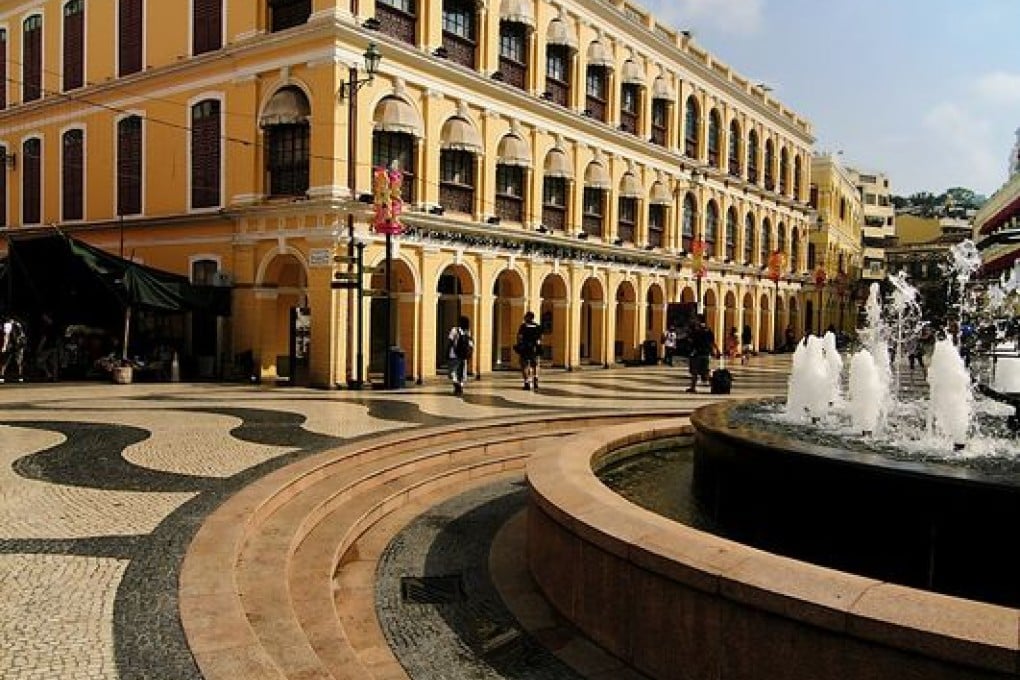Step onto Senado Square and into the past: Walking tours bring Macau’s Chinese, Portuguese history in focus
A walking tour through the streets around the centre of the old city leads to centuries-old buildings that reflect the city’s Portuguese and Chinese heritage


Senado Square
Senado Square sits at the heart of old Macau. Overlooking the triangular-shaped plaza is a building called the Leal Senado, which means “loyal senate” in Portuguese. It was the seat of the enclave's legislative assembly before Macau was returned to Chinese administration in 1999.
The Leal Senado houses a library with an important collection of books on Chinese history, along with a lovely courtyard garden and a ceremonial meeting room lined with portraits of Macau's Portuguese governors. But what inspired the building’s name?
Macau was an important centre of missionary activity throughout most of its history. As a result, its official name was “Cidade do Nome de Deus, Macau”, which means, “City of the Name of God, Macau”. During the Spanish occupation of Portugal between 1580 and 1640, the city was the only spot in the far-reaching Portuguese empire that remained loyal to the Portuguese crown.
After Portugal regained its independence from Spain, the Portuguese king, in gratitude for the loyalty of his subjects in Macau, renamed the city “Cidade do Nome de Deus, Macau, Nao Ha Outra Mais Leal”, or “City of the Name of God, Macau, There Is None More Loyal”.

Central Post Office
Built in 1784, the Leal Senado is one of several colonial-era buildings gracing the square. Others include the Central Post Office and the Santa Casa de Misericordia, or Holy House of Mercy, an imposing white plaster structure that dates back to 1569. Several other colonnaded buildings from that era now house mass-market clothing chain outlets and fast-food joints.
Senado Square is the perfect starting point for a stroll through one of the Macau's most fascinating neighbourhoods, where Portuguese and Chinese cultural influences are intertwined.

St Augustine's Square
From the square stroll up the Calcada do Tronco Velho, or Road of the Old Trunk, to St Joseph's Seminary and Church, which was built in 1758. Some of Macau's most important religious relics are on display inside. Continue past the Sir Robert Ho Tung Library to St Augustine's Square, which is flanked by St Augustine's Church and Dom Pedro V Theatre. Built in 1860, the performing arts venue is reputedly the first Western-style theatre that was built in China.

St Lawrence's Church
Continue down an incline to Rua de Sao Lourenco, or Saint Lawrence Road. To your right, you will see St Lawrence's Church, one of Macau's three oldest churches and also one of its most imposing. Built by the Jesuits in the 16th century, the church underwent several renovations over the years before acquiring its current look in 1846.

Lilau Square
Continue straight as Rua de Sao Lourenco turns into Rua do Padre Antonio, or Father Anthony Road to Lilau Square, where a collection of traditional Portuguese-style houses are clustered around a fountain containing water from a natural spring. It used to provide water to the colonial Portuguese community, and according to local legend, anyone who drank from the waters of Lilau would never forget Macau.
A few steps down the street is the former residence of Chinese ideologist Zheng Guanying, which was constructed in the middle of the 19th century. The largest private residence ever built in Macau, it has been turned into a museum called Mandarin's House. It is open to the public on Saturdays and Sundays. The residence is predominantly Chinese in style but displays subtle Western architectural influences.

Moorish Barracks
Continue past the Moorish Barracks - which were built in 1874 to house an Indian regiment from Goa - to Rua Da Barra, or Barra Street. At the road's end sits A-Ma Temple, which is dedicated to the goddess of seafarers and fishermen. One of the oldest Taoist temples in Macau, it was built in 1488 and sits at the enclave's southwestern tip.

Macau Maritime Musuem
Across the street on the waterfront is the Macau Maritime Museum, which is believed to be situated on the exact spot where the first Portuguese set foot on Macau. It contains a fascinating collection of exhibits detailing the lives of the local fishing community as well as the seafaring activities of Chinese and Portuguese sailors in centuries past.

Take a winning selfie
The Macau Government Tourist Office has launched the “Take Selfies to Win Prizes” promotion as part of its “Step Out, Experience Macau’s Communities – Walking Tour Routes” initiative. To take part, download the “Step Out, Macau” smartphone app and take selfies at two designated shooting spots along any of the eight walking tour routes, then present them to staff at any MGTO Tourist Information counter in Macau in order to receive a souvenir. The programme for residents and visitors runs through November 30.
Visitors can also enter a lucky draw by uploading their selfies to the app. Prizes include two round-trip business-class air tickets from the winner’s place of residence to any destination in the world, in addition to tablets and other rewards.